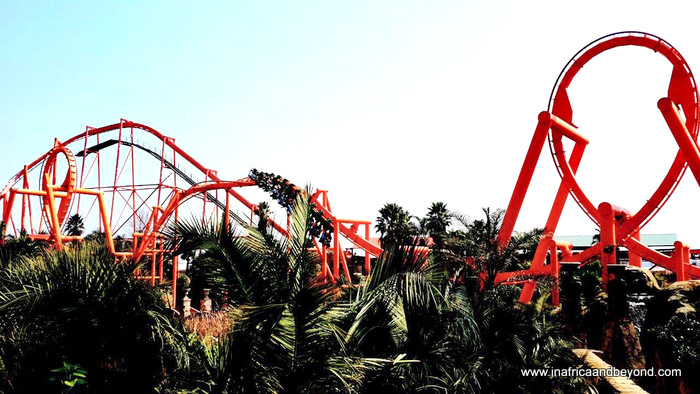Indicators on Johannesburg North Attractions You Should Know
Indicators on Johannesburg North Attractions You Should Know
Blog Article
The Only Guide to Johannesburg North Attractions
Table of ContentsJohannesburg North Attractions Things To Know Before You Get ThisJohannesburg North Attractions for DummiesThe 45-Second Trick For Johannesburg North AttractionsNot known Facts About Johannesburg North AttractionsNot known Facts About Johannesburg North Attractions6 Easy Facts About Johannesburg North Attractions ExplainedThe Basic Principles Of Johannesburg North Attractions
You should maintain safety in mind and vacationers have to remain alert at all times when in unfamiliar environments. Talk to the citizens when you remain in community to locate out about the area you are remaining in. Johannesburg North attractions. When on the street (this doesn't relate to mall and other secure settings) best general recommendations is to attempt your finest to resemble a regional and to stay clear of presenting any kind of kind of wide range
Everything about Johannesburg North Attractions
Professor Revil Mason O. J. (Thomson, 1946) discovered the Witwatersrand's pre-colonial history. His historical work blew up the 'em pty land' myth, according to which the region was without human habitation before the arrival of European settlers. In his publications Prehistory of the Transvaal: A Document of Human Activity (1962) and Beginnings of Black Individuals of Johannesburg and the Southern Western Central Transvaal AD 3501880 (1986 ), Teacher Mason showed the extent of social and financial advancement in the area before Europeans set foot below.

More About Johannesburg North Attractions
In 1878, David Wardrop discovered gold in quartz blood vessels at Zwartkop, north of Krugersdorp. In 1881, Stephanus Minnaar came across gold on the ranch Kromdraai, near the Cradle of Humankind.
In March 1886, a protrusion (soon to be called the Key Reef) was found, rather fortunately, on Gerhardus Oosthuizen's farm Langlaagte. Some claim that the Lancastrian coal miner George Walker found this coral reef. One more itinerant English miner, George Harrison (who had actually previously functioned in Australian mines) gotten a prospecting permit in respect of Langlaagte in May 1886.
He chose to relocate on in a mission for greener pastures, and disposed of his Langlaagte insurance claim for the princely amount of 10. Alas: under lay the wealthiest goldfield ever before located. The discovery of this rich auriferous coral browse around this site reef provoked a gold rush that signified the end of agrarian serenity in the southerly Transvaal.
It would, within 6 years, end up being the biggest community in southern Africa. Within a years, it would make the Z. A. R. until after that an anarchical and bankrupt little state the most affluent country in Africa. By the turn of the century, the Z. A. R. was to surpass Russia, Australia and the USA of America to come to be the globe's leading gold manufacturer, producing greater than a quarter of the globe's gold.
What Does Johannesburg North Attractions Mean?
It was referred to as Ferreira's Camp, called after Colonel Ignatius Ferreira. He was a Boer adventurer upon whom the British authorities had presented the status of Companion of one of the most Identified Order of St Michael and St George (entitling him to the post-nominal letters C. M. G.) in appreciation for his role in the battle that had actually deposed the Pedi king Sekhukhune in 1879.
Quickly the camp was including camping tents and wagons as novices showed up daily from far and wide. By September 1886, some 400 people resided in Ferreira's Camp, which soon boasted built iron and hardwood buildings. 2 other camps were developed: Meyer's Camp on the farm Doornfontein, and Paarl Camp. The latter was nicknamed Afrikander Camp; many people from the Cape Nest cleared up there.

Things about Johannesburg North Attractions
This name gained currency by word of mouth, such that the State Secretary attested the name to the Mining Commissioner on 9 October 1886. Stands in the village were auctioned on 8 December 1886. While some stands were sold for 10, others were torn down for just sixpence.
2 years later, these erven were to change hands for as long as 750 each. The tented camps decreased as a dorp of corrugated iron structures established and broadened north of the mines located along the Key Coral Reef Road. Areas such as Jeppe's Community (where working-class immigrants erected their houses) and Doornfontein (where the upscale brand-new 'Randlords' began to construct their luxurious houses) were quickly included in the ever-expanding map of the community.
Little Known Questions About Johannesburg North Attractions.
Besides the street names, there were no signs of Johannesburg being situated in a Dutch-speaking country. Several years later, YOURURL.com C. W. Kearns O. J. (one of the initial boys signed up at St John's College in 1898) would remember: 'An odd truth concerning Johannesburg was that, although it remained in the [Boer Republic], almost everyone talked English and also the Government servants dealt with one in English, unless they were first attended to in the Taal (or Low Dutch)'.
As such, Britain had a rate of interest in making certain ideal conditions for gold production on the Witwatersrand, which the gold was exported to London as opposed to Berlin a vital provided even more clamant by the Z. A. R - Johannesburg North attractions.'s boosting toenadering with Germany. Mine owners were on a clash with President Kruger, whose plan of monopolistic concessions (typically granted to his cronies) stopped mining business from acquiring materials of products (specifically dynamite) and work by themselves, more affordable terms
Johannesburg North Attractions Things To Know Before You Buy
In 1890, the Volksraad had limited the franchise to white guys that had lived in the Z. A. R. for fourteen years or longer, thus disqualifying a lot of the immigrants (who happened to be the major factors to the fiscus). Anxiety for the Homepage ballot was a plain pretext for promoting a various agenda; many uitlanders regarded themselves as momentary visitors and had no intention of remaining in the Z.
Report this page